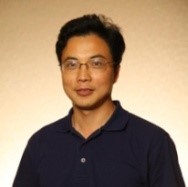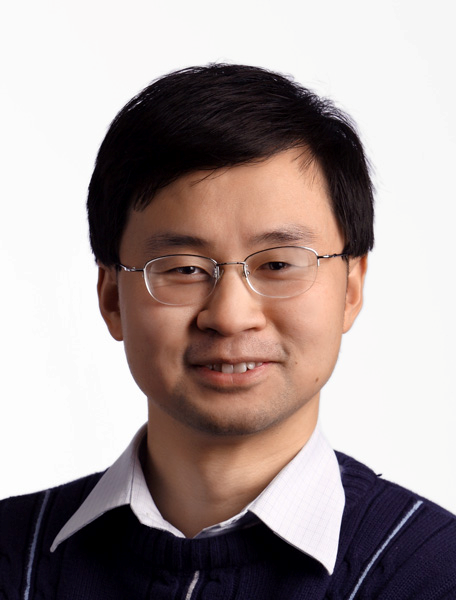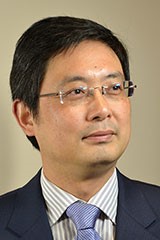2017年8月28日上午,308会议室
一、报告安排
张其春 新加坡南阳理工大学 New strategies to approach novel exotic materials 9:00-9:50
Song Jin (金松) 美国威斯康星大学 Earth-Abundant Electrocatalysts for Electrocatalytic and Photoelectro-chemical Water Splitting 9:50-10:40
汪国秀 悉尼科技大学 Materials design for developing high performance rechargeable batteries 10:40-11:30
二、报告人简介
Dr. Qichun Zhang obtained his B.S. at Nanjing University in China in 1992, MS in physical organic chemistry (organic solid lab) at Institute of Chemistry, Chinese Academy of Sciences (Prof. Peiji Wu/Daoben Zhu’s group, ICCAS, Beijing) in 1998, MS in organic chemistry (Prof. Fred Wudl’s group) at University of California, Los Angeles (USA), and completed his Ph.D. in inorganic chemistry at University of California Riverside (Prof. Pingyun Feng’s group, USA) in 2007. Then, he joined Prof. Kanatzidis’ group at Northwestern University as a Postdoctoral Fellow (Oct. 2007 –Dec. 2008). Since Jan. 2009, he joined School of Materials Science and Engineering at Nanyang Technological University (NTU, Singapore) as an Assistant Professor. On Mar 1st, 2014, he has promoted to Associate Professor with tenure and on Dec 1st, 2014, he became an adjunct Associate Professor at Division of Chemistry and Biological Chemistry, School of Physical and Mathematical Sciences, Nanyang Technological University. Besides these, he also had three-year working experience in research institute of Nanjing Chemical Industry Co. (Aug. 1992 – Aug. 1995) and two-year’s research experience in ICCAS (Aug. 1998 – Jun 2000). He received TCT fellowship in 2013 and lectureship from National Taiwan University in 2014. Currently, he is an associate editor of J. Solid State Chemistry, the Advisory board member of Materials Chemistry Frontiers, and the Advisory board member of Inorganic Chemistry Frontiers. Also, he is a fellow of the Royal Society of Chemistry. He has published > 254 papers and 4 patents (H-index: 52).
In this talk, I will present several novel strategies in my research to prepare new exotic materials, which I hope to be helpful to graduate students for doing their own research. The strategies are (1) the chemical reactions among organic micro/nano-particles in aqueous solution; (2) surfactant-thermal method to control the bulk crystal growth of chalcogenides and MOFs; (3) Conjugated polymers for Li-ion batteries; (4) “clean” reaction to approach larger acenes; (5) “doping” oligoacenes with heteroatoms; (6) inorganic-organic hybrid nanoprobes for the detection and imaging of ROS/RNS species. Due to time limitation, (4), (5), and (6) will not be talked in detail this time.
Prof. Song Jin received his B.S. in Chemistry from Peking University in 1997, Ph.D. in 2002 from Cornell University under the direction of Prof. Francis J. DiSalvo and carried out his postdoctoral research under the direction of Prof. Charles M. Lieber at Harvard University. Dr. Jin is interested in the chemistry and physics of nanoscale materials and solid state materials. Dr. Jin developed innovative synthesis of a variety of nanomaterials including metal silicides, oxides, chalcogenides, and halide perovskites, and discovered and developed the screw dislocation-driven growth of anisotropic nanomaterials. Building on the fundamental understanding of novel physical properties, Jin advances the exploitation of (nano)materials for photovoltaic and photoelectrochemical solar energy conversion, electrocatalysis, energy storage, optoelectronics, nanospintronics, and biotechnology. The unifying theme of Jin’s energy research is the focus on earth-abundant materials. Dr. Jin has authored or co-authored over 150 publications and 6 patents. He has been recognized with a NSF CAREER Award, a Research Corporation Cottrell Scholar Award and as one of world’s top 35 innovators under the age of 35 (TR35 Award) by the MIT Technology Review Magazine, the ACS ExxonMobil Solid State Chemistry Fellowship, and the Alfred P. Sloan Research Fellowship, Research Corporation SciaLog Award for Solar Energy Conversion, U. of Wisconsin-Madison Vilas Associate Award and H. I. Romnes Faculty Fellowship, and the ACS Inorganic Nanoscience Award. He recently became a Senior Editor for ACS Energy Letters.
The scale of renewable energy challenges not only calls for highly efficient photovoltaic (PV) or photoelectrochemical (PEC) technologies but also abundant, inexpensive, and robust materials. Earth-abundant but highly active electrocatalysts need to be discovered to enable the most efficient and sustainable production of energy using electrocatalytic and PEC water splitting. We reportnanostructures of several new earth-abundant electrocatalysts, such as exfoliated nanosheets of MoS2, WS2, MoSe2, for the hydrogen evolution reaction (HER) and significantly enhanced their catalytic activity. We established nanotructures of ternary pyrite-type cobalt phosphosulfide (CoPS) as the best earth-abundant HER catalyst to date that does not contain expensive noble metals. For oxygen evolution reaction (OER),we have developed NiCo and NiFelayered double hydroxides (LDHs) that have been exfoliated into high surface area nanosheets to enhance their catalytic activity. We have studied their catalytic mechanism and further explored and discovered trimetallic LDH materials with more enhanced catalytic activity. These earth-abundant catalysts have been integrated with silicon and other semiconductors to enable the efficient solar-driven hydrogen generation devices using earth-abundant materials. 
Professor Guoxiu Wang is the Director of the Centre for Clean Energy Technology and a Distinguished Professor at University of Technology Sydney (UTS), Australia. Professor Wang is an expert in materials chemistry, electrochemistry, energy storage and conversion, and battery technologies. His research interests include lithium-ion batteries, lithium-air batteries, sodium-ion batteries, lithium-sulfur batteries, supercapacitors, hydrogen storage materials, fuel-cells, graphene, and chemical functionalisation of graphene. Professor Wang has published more than 390 refereed journal papers with an h-index of 67. His publications have attracted over 17,000 citations (Web of Science).
In this talk, I will report the development of advanced lithium-ion batteries, lithium-air batteries and sodium-ion batteries, based on materials architecture design. Graphene nanosheets, tin-graphene and silicon-graphene nanocomposites have been prepared by various techniques. When applied as anode materials in lithium-ion batteries, they demonstrated enhanced electrochemical performances. Lithium-air battery isone of the most promising systems for meeting today’s stringent requirements as the power source for electric vehicles. The theoretical specific energy of the Li-O2 battery is 3,505 Wh kg 1, which is almost ten times higher than that of Li-ion batteries (387 Wh kg-1).Porous graphene with different pore size architectures were synthesized as cathode catalysts for lithium-air batteries. Porous grapheneexhibited significantly higher discharge capacities than that of non-porous graphene. The Ru nanocrystal decorated porous graphene exhibited an excellent catalytic activity with a high reversible capacity, low charge/dischargeover-potential, and long cycle life. Furthermore, sodium-ion batteries were also investigated.3Sodium-ion batteries and potassium-ion batteries are being considered as a promising system for stationary energy storage and conversion, owing to natural abundance of sodium and potassium. Several electrode materials were synthesized as either cathode materials or anode materials for sodium-ion batteries and potassium-ion batteries.
附件下载: